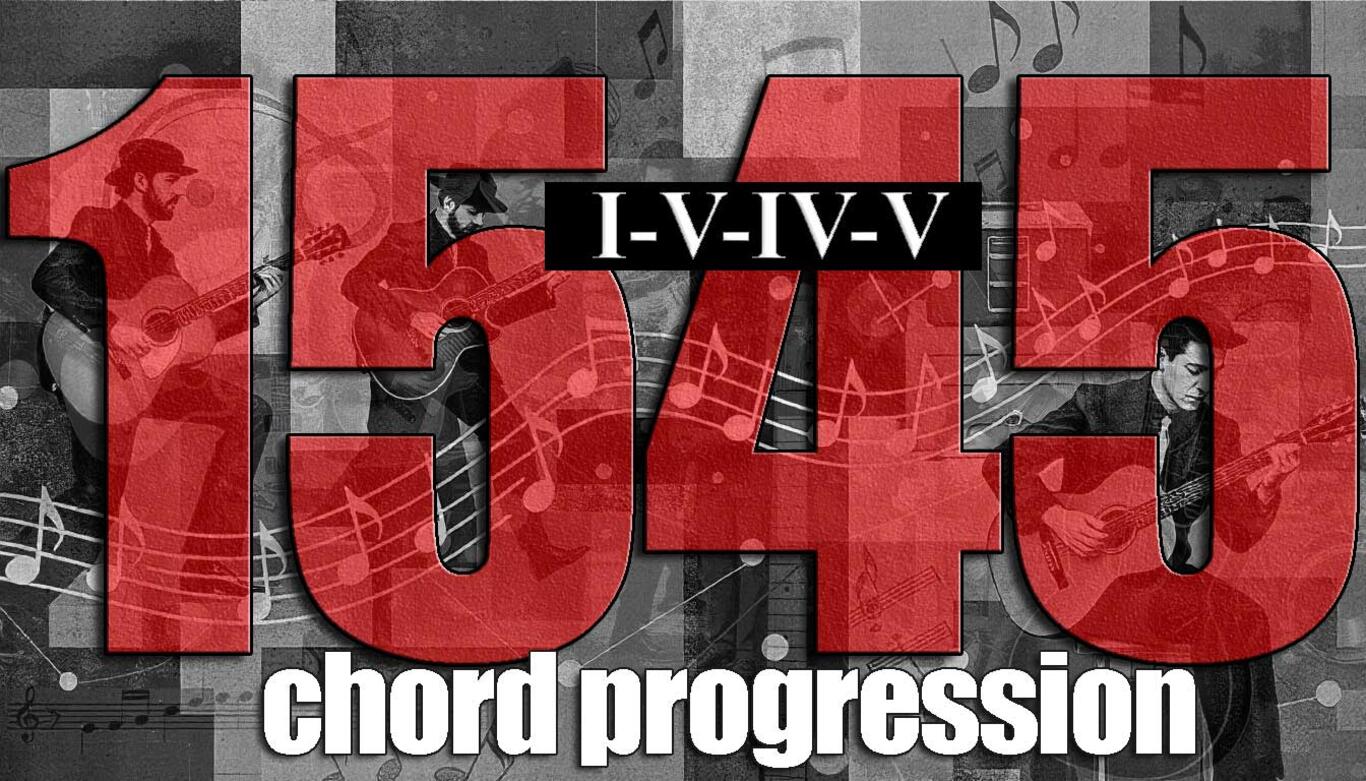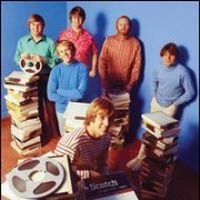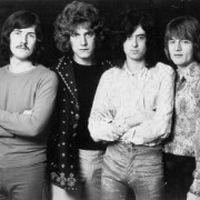The 1-5-4-5 Chord Progression: What It Is, Why It Works, and Famous Pop Tunes That Use It

Press Play to hear
The 1-5-4-5 chord progression (I-V-IV-V) is yet another of the most popular and enduring progressions, especially in the pop, rock, and country genres. It’s frequently called the “Major Scale vamp” because it derives directly from the major scale and serves as a fundamental building block for countless hits. The progression’s simplicity, strong harmonic relationships, and emotional flexibility have made it a staple for songwriters across the decades.
Famous Songs That Use the 1-5-4-5 Progression
The 1-5-4-5 chord progression has been used in countless hit songs over the years, spanning multiple genres and generations. Below is a selection of songs that have successfully used this progression to create hits
1. “Good Lovin’” by The Rascals
- Key: D major (D - A - G - A)
- "Good Lovin’" is a fast-paced, energetic pop-rock song that exemplifies how the 1-5-4-5 progression can drive a feel-good hit. The repeated tension and release between the tonic and dominant chords create an irresistible groove that has made the song a classic.
2. “What I Like About You” by The Romantics
- Key: E major (E - B - A - B)
- This upbeat rock anthem relies on the 1-5-4-5 progression to build its infectious, high-energy feel. The repetition of the progression throughout the song reinforces its catchy, sing-along quality, making it a staple of rock music.
3. “Twist and Shout” by The Beatles
- Key: D major (D - A - G - A)
- One of the most iconic songs in rock history, "Twist and Shout" makes use of the 1-5-4-5 progression to drive its raw, danceable energy. The progression supports the call-and-response structure of the song, creating a dynamic and engaging feel.
4. “La Bamba” by Ritchie Valens
- Key: C major (C - G - F - G)
- "La Bamba" is another classic example of the 1-5-4-5 progression in action. The rhythmic, repetitive nature of the progression helps to create the song’s danceable, festive vibe, while the vocal melody adds an extra layer of excitement.
5. “Surfin’ U.S.A.” by The Beach Boys
- Key: G major (G - D - C - D)
- This surf rock hit uses the 1-5-4-5 progression to create its upbeat, breezy feel. The simplicity of the chord changes allows the song’s vocal harmonies and catchy melodies to take center stage, making it a defining track of the surf rock era.
6. “Louie Louie” by The Kingsmen
- Key: A major (A - E - D - E)
- The primal energy of "Louie Louie" is driven by the 1-5-4-5 progression, which gives the song its raw, garage-rock sound. The repetitive nature of the progression makes the song’s hook unforgettable, contributing to its lasting influence on rock music.
7. “I Fought the Law” by The Bobby Fuller Four
- Key: G major (G - D - C - D)
- This rebellious rock classic uses the 1-5-4-5 progression to create a sense of urgency and forward momentum. The song’s structure is simple but effective, allowing the lyrics and melody to shine.
8. “Do You Love Me” by The Contours
- Key: D major (D - A - G - A)
- In this Motown hit, the 1-5-4-5 progression serves as the backbone of the song’s danceable groove. The repetition of the progression allows the vocals and rhythm section to build energy throughout the track, making it an enduring favorite on the dance floor.
9. “Shake, Rattle and Roll” by Big Joe Turner (and Bill Haley) 

- Key: C major (C - G - F - G)
- This early rock and roll classic relies on the 1-5-4-5 progression to drive its upbeat, danceable rhythm. The back-and-forth motion between the tonic and dominant chords creates a sense of fun and excitement, making the song an enduring rock anthem.
10. “Johnny B. Goode” by Chuck Berry
- Key: A major (A - E - D - E)
- One of the most famous rock and roll songs ever written
- There She Goes by the La’s
- Luka by Suzanne Vega
- Your Body is a Wonderland by John Mayer
- Tangerine by Led Zeppelin
- MM Bop by Hanson
- All The Small Things by Blink 182
- Heaven is a place on Earth by Belinda Carlisle
What Is the 1-5-4-5 Progression?
In music theory, the numbers 1, 5, 4, and 5 refer to the chords built on the first (I), fifth (V), and fourth (IV) degrees of the major scale. Here’s how it works:
In the key of C major, the progression would be:
- 1 (I) = C major
- 5 (V) = G major
- 4 (IV) = F major
- 5 (V) = G major (repeated)
So, in the key of C major, the 1-5-4-5 progression would be:
- C - G - F - G
This progression, especially with the V chord repeated twice, forms a cycle that feels complete, like a harmonic circle. It offers a strong sense of movement, while the return to the tonic (I) provides a satisfying sense of resolution.
In other keys, the 1-5-4-5 progression looks like this:
- Key of G major: G - D - C - D
- Key of D major: D - A - G - A
- Key of A major: A - E - D - E
Conclusion
The 1-5-4-5 chord progression has cemented itself as one of the most enduring and widely used progressions in popular music. It’s simplicity, combined with its ability to create tension and resolution, makes it a perfect tool for songwriters across genres. Whether in early rock and roll, surf rock, Motown, or modern pop, the 1-5-4-5 progression continues to be a staple for crafting hits.
NEXT >> the 1 5 4 6 chord progression



